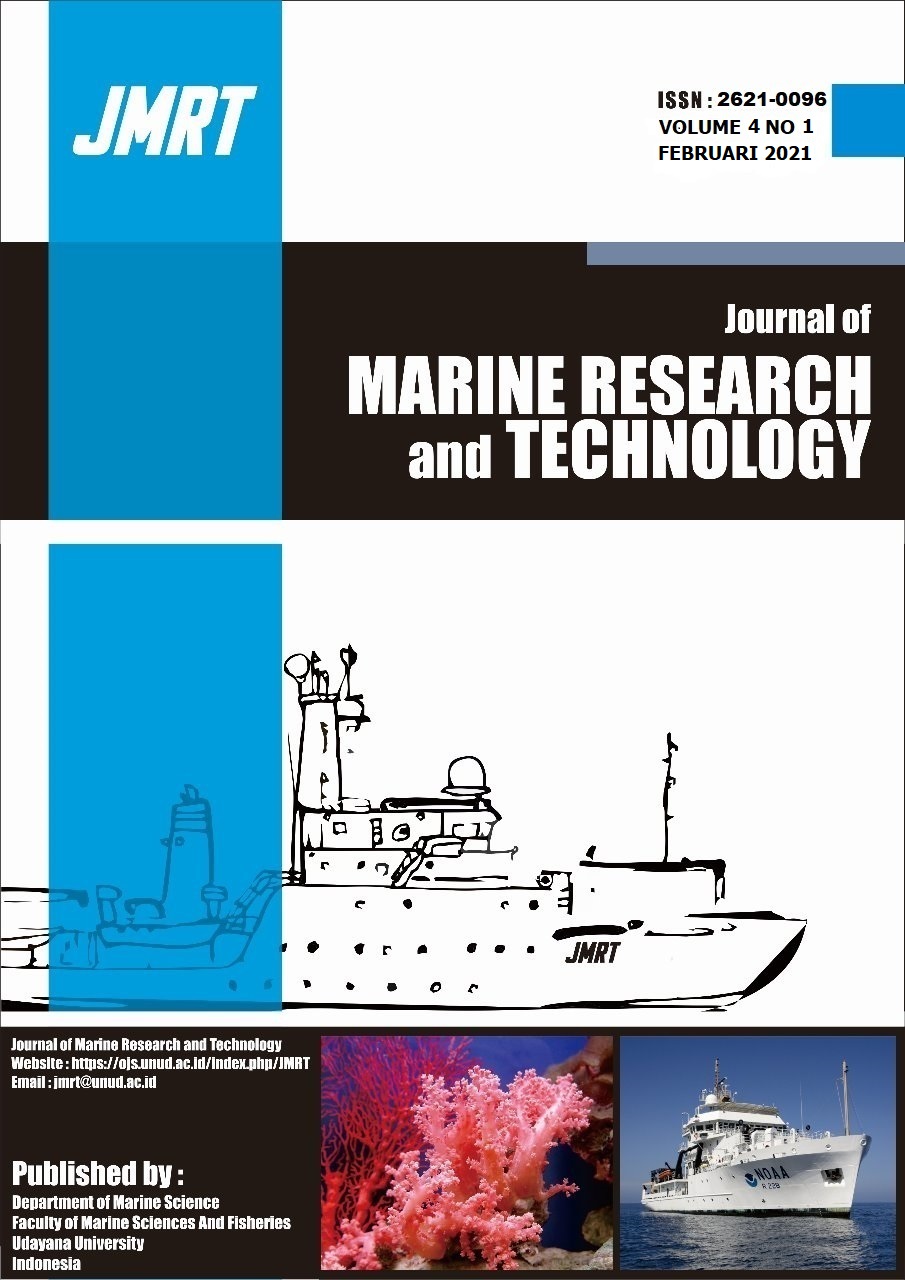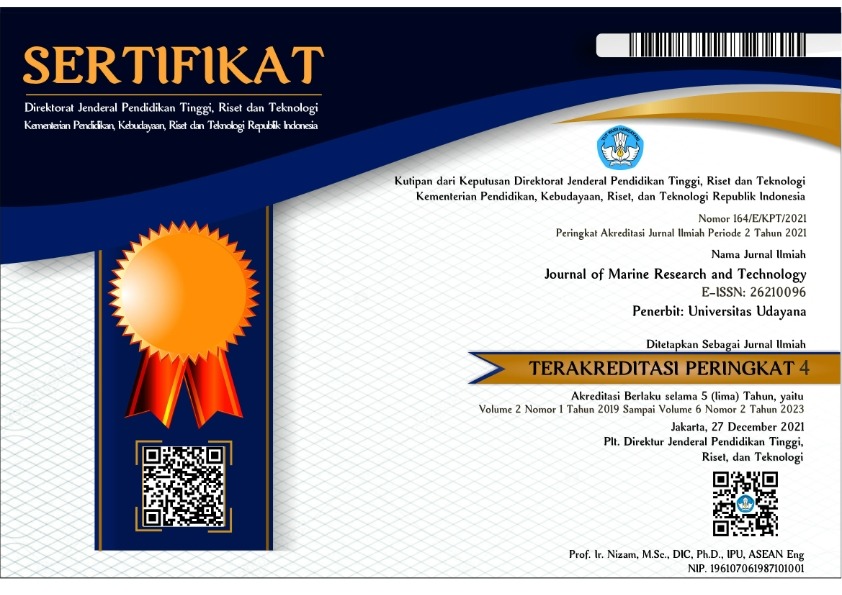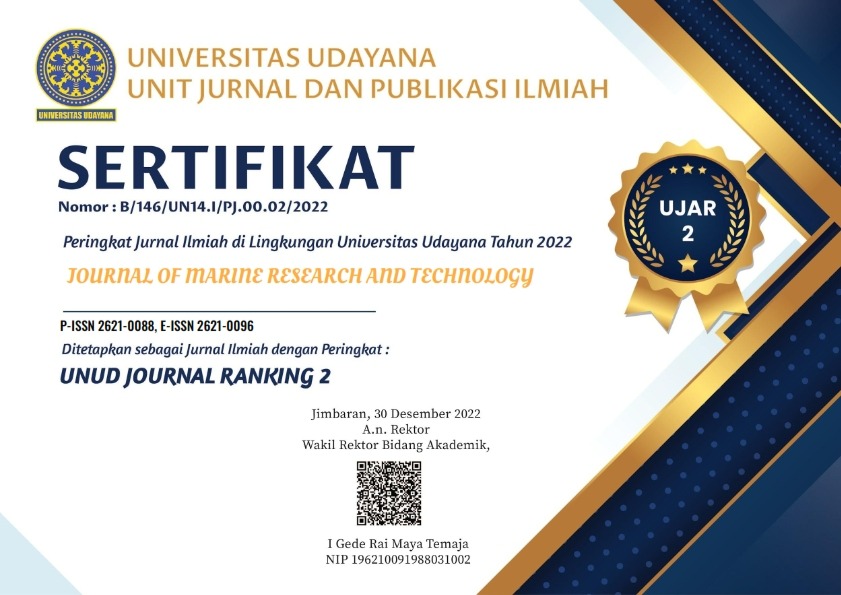Respon Pertumbuhan dan Konsentrasi Klorofil–a pada Kultur Mikroalga Chaetoceros gracilis terhadap Perbedaan Suhu Kultur
Chaetoceros gracilis; Chlorophyll-a; Growth rate; Growth trends; Temperature
Abstract
Microalgae Chaetoceros gracilis is widely used in aquaculture. Its culture highly depends on environmental factors, particularly temperature. This study aimed to examine the growth rate and its growth trend of C. gracilis, also chlorophyll-a concentration at different temperature. cultures were incubated at 25, 30 dan 340C for seven days using Na media with three replicates. Cell density was counted every day using a hemocytometer, whereas the concentration of chlorophyll-a was measured in spectrophotometry method. The differences in growth rates and chlorophyll-a concentration at different temperatures were statistically analyzed with One-Way ANOVA. The difference variables were further tested with the Tukey HSD test. The trend of the growth and duration of C. gracilis at 25 and 30 0C were similar, with the lag phase (three days), logarithmic (two days), stationary (one day), and declination (one day), in contrast at 34 0C that had lower duration and missed the stationary phase. The growth rates of microalgae C. gracilis was insignificantly differences at the temperature of 25 and 30 0C (0.7±0.05 cell/ml/day), but significantly lower at 340C (0.28±0.03 cell/ml/day). The chlorophyll-a concentrations at the temperature of 25 and 30 0C were not significantly different (0.37±0.05 and 0.39±0.03 mg/l), while the chlorophyll-a concentration at 34 0C was significantly lower (0.26±0.04 mg/l). This result indicates the high temperature (34 0C) inhibited the metabolism of C. gracilis as shown by doubling times that slower (2.5 day) than the temperature at 25 and 30 0C. It is concluded that the optimum temperatures for the C. gracilis were 25 and 30 0C, where as 340C was the inhibited temperature.
Downloads
Copyright Notice
The copyright to this article is transferred to Journal of Marine Research and Technology (JMRT). The copyright transfer covers the exclusive right and license to reproduce, publish, distribute and archive the article in all forms and media of expression now known or developed in the future, including reprints, translations, photographic reproductions, microform, electronic form (offline, online) or any other reproductions of similar nature.






